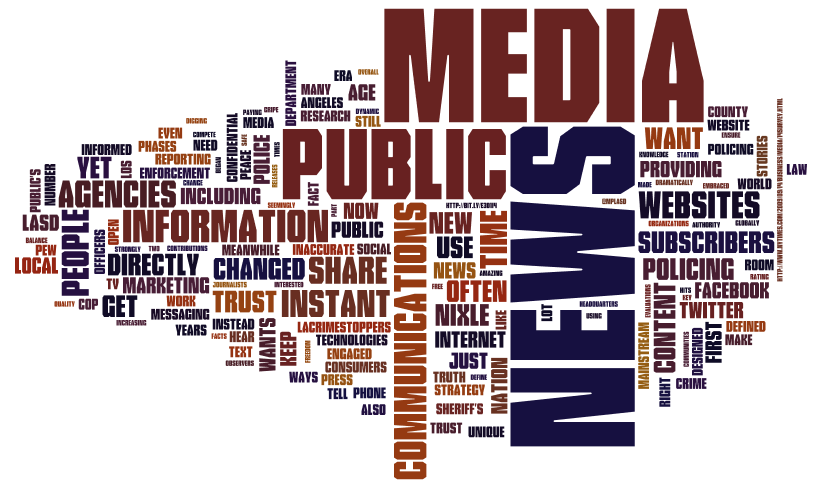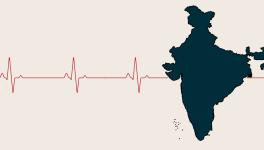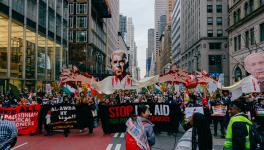The Need for a Proactive Media During a Public Health Crisis

Image Courtesy: myRepublica - Nagarik Network
The ongoing COVID-19 pandemic has made a large amount of medical information available in the public domain across the globe. However, the mainstream Indian media’s response in the fight against COVID-19 raises serious concerns about fake news and misinformation, the inclusivity of the coverage, and the state of medical journalism, among others. The coverage and discussions surrounding the Tablighi Jamaat incident in Delhi by popular media outlets in India is an excellent example of a twisted media response during a massive public health crisis which communalised the situation by diverting attention from the grave concern at hand.
Further, popular television news channels named the Tablighi Jamaat conference attendees as coronavirus ‘superspreaders’. The Director General of the World Health Organisation spoke about the crisis of misinformation and raised concerns about the problem in a press conference on February 15, 2020. He pointed out that “we are not just fighting an epidemic; we are fighting an infodemic”.
The story of the media coverage of the Spanish Flu in 1918 across the western world provides a vital lesson about the role of media during a public health crisis. News about the Spanish Flu seldom made headlines and it was completely overshadowed by the coverage of World War I in most countries. In his article, titled ‘How American Newspapers covered up a Pandemic’, Walter Shapiro noted that “the big city newspapers sugar-coated the news, practicing an alarming level of self-censorship. Any article or headline suggesting more than causal concern about the disease would be open to attack for undermining the morale on the home front during the War”.
The least any media could do during a crisis of this sort is to project accurate and timely information, along with reporting the facts about the risks and treatments related to the pandemic. However, a section of the mainstream news media’s coverage of COVID-19 in India has raised serious concerns about the state of medical journalism in India.
Many of the mainstream Indian media networks peddled sensational claims linked to the origin of the virus outbreak. They had conspiracy theories about its spread among the public, information about fake local remedies, indigenous ways to prevent the spread, and unconfirmed reports about vaccine research, to name a few. For instance, on April 18, TV9 Bharatvarsh aired a news item about Tablighi Jamaat leader Maulana Saad’s secret underground tunnel discovered in Nizamuddin. The programme further used video game graphics to show the purported tunnel as reported by AltNews among others.
During the initial period of the pandemic in India, some sections of the media focused on the afore mentioned issues, without any sort of scientific research to back up its claims. Almost everyday, news items appeared in sections of the mainstream media about the possible discovery of vaccines which created further confusion amongst the public rather than provide any helpful assurance. For instance, fact checking websites like AltNews reported on India Today’s Rahul Kanwal’s dubious claim that India will get early access to the COVID-19 vaccine from America, which was nothing but misinformation.
Similarly, there was an increase in cases of racial attacks against people from North-Eastern states in different parts of the country based on fear mongering around COVID-19. A group of teens from the North-East were denied grocery at a supermarket in Bengaluru because of racial and ethnic reasons. The information was circulated on social media via vigilant citizen groups and other organisations. However, most of the mainstream networks chose to ignore events like these in their prime time discussions. Alternative media sources like The Caravan and others discussed these concerns. This reminded us about the importance of a people-centered and inclusive media approach during a crisis like the ongoing one.
Another important aspect, worthy of attention during the pandemic, is the origin of fake news on social media associated with prominent figures, politicians and religious organisations. A study conducted by Reuters Institute for the Study of Journalism and the Oxford Internet Institute titled Types, Claims and Sources of COVID-19 Information points out that “false information spread by politicians, celebrities, and other prominent figures accounted for 69% of total engagement on Social Media”.
During a crisis like the one we are faced with, people are required to be served with correct information. In the absence of the it, individual or community behaviour can adversely impact the measures taken by the local authorities. Further, it can play a decisive role in the spread of the virus.
The recent incident at the Bandra station in Mumbai, which saw a large outpouring of migrant workers on the streets when they were served with fake news about availability of transport to take them home, is a case in point. It reminds us that perhaps public health crisis reporting requires specialised training to process medical related information, which ought to be analysed and reported with utmost care.
The current crisis has exposed the dearth of trained medical journalists in the Indian media. This has adversely affected the coverage of COVID-19 in the country. Most of the journalists covering the ongoing pandemic lack basic medical know how and also the ethics of medical news reporting. It also suggests the significance of having a full time medical journalist in the news team who can have a better grip on the situation.
A political reporter’s coverage of a public health crisis can derail the focus that has to be given to the treatment and precautions regarding an outbreak. The Malayalam media’s coverage of COVID-19 in the last two weeks is a classic example of this behaviour. They concentrated more on the controversies associated with Kerala’s political scenario rather than the outbreak.
The unavailability of medical journalists in India is a systemic issue, however. It is barely taught in any journalism programme in the country. The current journalism curriculum in the country does not adequately address specialised training in many areas, including medicine. As a result, reporters either educate themselves about the subject or depend upon their experience of reporting about the same.
However, a crisis is a different situation and demands special skills. The COVID-19 crisis has accelerated the debate about inclusive journalism training in Indian Universities. Moreover, this will significantly contribute to the diversity of the Indian newsroom.
The COVID-19 pandemic has also opened up another critical area of discussion about the importance of a stable public health care system in countries across the globe. Early shreds of evidence prove that states like Kerala, which a better public health care system, could contain the outbreak faster than others. Kerala has been singled out for praise as a model state in many sections of the foreign media.
Our ongoing situation might be an excellent opportunity for sections of the Indian media to redefine their engagement with society and rightfully chronicle the basic needs of the large majority of our population. The media could also seize the occasion to think about a specialised task force of medical journalists who are better trained to deal with similar situations in the future. And this is also the right time to invest in a more diverse and inclusive media system that can proactively deal with a public health crisis.
The author teaches Media Studies at FLAME University, Pune. The views are personal.
Get the latest reports & analysis with people's perspective on Protests, movements & deep analytical videos, discussions of the current affairs in your Telegram app. Subscribe to NewsClick's Telegram channel & get Real-Time updates on stories, as they get published on our website.
























